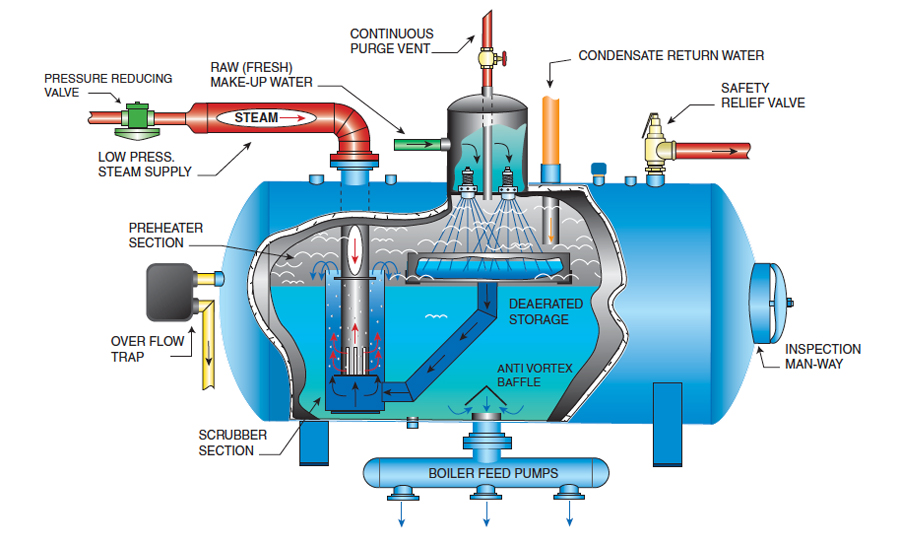While many types of corrosion can occur in the steam boiler environment, oxygen-related corrosion is by far the most common. All make-up water sources contain oxygen. Even pretreatment strategies such as softening and reverse osmosis do not remove oxygen.
The solubility of oxygen in water is inversely proportional to temperature. That is, the hotter the water, the less oxygen it will hold. The goal of any feedwater treatment program is to reduce the amount of oxygen in the feedwater so that as little as possible enters the boiler.
Oxygen that enters the extreme temperature of the boiler quickly comes out of solution and attacks boiler tubes. Oxygen can pit and corrode through a boiler tube in as little as several hours. Oxygen pits can cause catastrophic failures.
How Can I Tell If I Have An Oxygen Pitting Problem?
Steam boilers are hot and water tight and do not lend themselves to visual inspections. Unfortunately, the consequences of poor pretreatment usually go unnoticed until it’s too late.
Oxygen pitting that does not show up during inspections is usually only discovered when a boiler tube fails. The best way to deal with oxygen pitting is to prevent it from beginning at all.
If you do see corrosion during a boiler inspection, you can tell if the corrosion is oxygen pitting because the pits are deep, steep and usually round. Oxygen is involved in many types of corrosion and pitting is just one of the types, but they are all serious problems and generally irreversible.
Why Doesn’t Sulfite Take Care Of The Oxygen In The Boiler?
Sulfite reacts with oxygen in water to form sulfate within the boiler. Once the oxygen is tied up as sulfate, it is no longer available to react with steel to form iron oxides or rust. More importantly, once it is scavenged from the water by reacting with sulfite, oxygen is not available to form oxygen pits.
Simply adding sulfite to the feedwater doesn’t scavenge all of the oxygen. Heat and catalysts can speed up the oxygen-sulfite reaction, but it will only react at a certain rate. The catalyst does not significantly accelerate the reaction above 200° F.
Chardon has used catalyzed sulfite exclusively since 1982, but even the most reliable chemical treatment program cannot fight the effects of cold feedwater or intermittent boiler operation without additional help.

How Should I Deal With Oxygen In My Boiler?
The best way to get rid of oxygen in boiler feedwater is with heat. Pitted boiler tubes are inevitable when the feedwater temperature is below 150° F.
There are several ways to heat feedwater including steam and electric heaters. The most effective tool for removing oxygen from feedwater is the deaerator. This device uses a semi-pressurized vessel or tank and steam produced by the boiler to boost the feedwater temperature as high as 220° F. Not all steam boilers warrant a full blown deaerator, but there are cost effective solutions for every system.
A steam sparger can be added to most any feedwater tank that feeds live steam into the feedwater to maintain a constant elevated temperature. Oxygen is forced from the water and driven out through the boiler tank vent. Electric heaters can be added to smaller steam boiler feedwater systems that operate in the same way. Remember, pitted boiler tubes are inevitable without some mechanism to preheat the feedwater to at least 190° F.

Matt Welsh
Matt Welsh is the Vice President and Water Consultant at Chardon Labs. He helps consult a wide range of customers utilizing various methods of water treatment, from chemical to chemical-free approaches, large and small applications, and across a wide range of geographical influences. With 20 years of water treatment experience, including a wide range of troubleshooting and service in potable water and non-potable HVAC and industrial applications, he is an expert in water treatment chemistry for cooling towers, boilers, and closed-loop systems.
